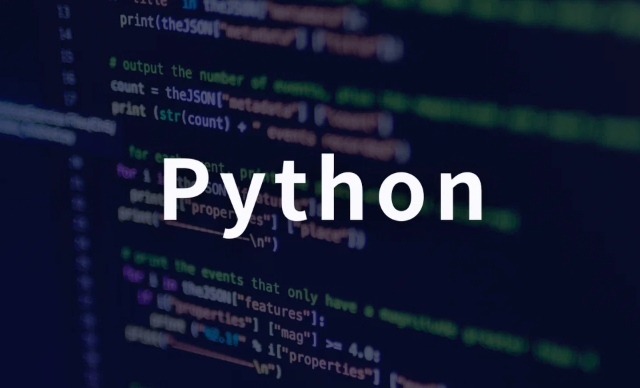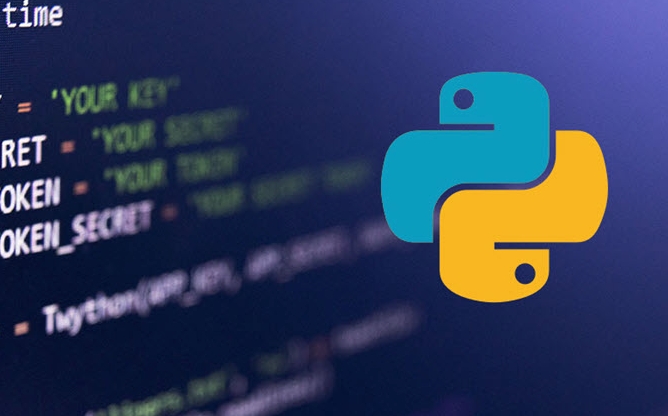Use Pillow to adjust the image size according to whether the aspect ratio is maintained: 1. Direct resize() will stretch the image, which is suitable for scenes where proportions are not required; 2. Use thumbnail() to automatically maintain the aspect ratio, generate undistorted thumbnails, and the maximum size does not exceed the specified value; 3. Custom resize_with_aspect_ratio() function can flexibly control the target width and height, improve quality by calculating the scaling ratio and using LANCZOS resampling; 4. Pay attention to the image mode during processing, and convert it to RGB if necessary to avoid saving errors; 5. It is recommended to use thumbnail() or custom functions to maintain the image proportions, avoid deformation, and finally save or display the result image to end with a complete sentence pattern.

Resizing images using Python's Pillow library is a common operation. Here is a simple and practical example showing how to load an image and resize it to a specified size.

Install Pillow
If you haven't installed Pillow yet, run it first:
pip install pillow
Basic resize example
from PIL import Image # Open the image file img = Image.open('input.jpg') # Resize image (width, height) resized_img = img.resize((800, 600)) # Save the adjusted image resized_img.save('output_resized.jpg') # Optional: display image resized_img.show()
Maintain the aspect ratio resize (recommended)
Direct resize() will stretch the image. If you want to maintain the original aspect ratio, you should use thumbnail() method:

from PIL import Image img = Image.open('input.jpg') # Create a copy and keep scaled to a maximum of no more than (800, 600) img.thumbnail((800, 600)) # Modify the original image or copy # Save the result img.save('output_thumbnail.jpg')
?
thumbnail()will automatically scale to scale, will not deform, and the maximum size does not exceed the specified value.
Maintain aspect ratio manually (custom logic)
If you want to have more flexibility in control:

from PIL import Image
def resize_with_aspect_ratio(image, target_width=None, target_height=None):
original_width, original_height = image.size
if target_width and target_height:
# Ensure the image completeness according to the minimum scaling ratio (white space can be processed later)
scale = min(target_width/original_width, target_height/original_height)
new_width = int(original_width * scale)
new_height = int(original_height * scale)
elif target_width:
scale = target_width / original_width
new_width = target_width
new_height = int(original_height * scale)
elif target_height:
scale = target_height / original_height
new_height = target_height
new_width = int(original_width * scale)
else:
raise ValueError("At least target_width or target_height")
return image.resize((new_width, new_height), Image.Resampling.LANCZOS)
# Use example img = Image.open('input.jpg')
resized = resize_with_aspect_ratio(img, target_width=800)
resized.save('output_aspect_ratio.jpg')?
Image.Resampling.LANCZOSis used here to improve scaling quality (Pillow 9.0 recommends alternative toImage.ANTIALIAS).
Things to note
-
resize()is a direct stretch that may cause deformation. -
thumbnail()is more suitable for thumbnail generation and automatically maintains the scale. - It is recommended to use high-quality resampling methods such as
LANCZOSorBICUBICwhen processing large images. - Image mode (such as RGBA, P) may affect saving and can be converted if necessary:
img = img.convert('RGB')
Basically that's it. Choose the method of directly resize or maintaining proportions according to your needs.
The above is the detailed content of python pillow resize image example. For more information, please follow other related articles on the PHP Chinese website!

Hot AI Tools

Undress AI Tool
Undress images for free

Undresser.AI Undress
AI-powered app for creating realistic nude photos

AI Clothes Remover
Online AI tool for removing clothes from photos.

Clothoff.io
AI clothes remover

Video Face Swap
Swap faces in any video effortlessly with our completely free AI face swap tool!

Hot Article

Hot Tools

Notepad++7.3.1
Easy-to-use and free code editor

SublimeText3 Chinese version
Chinese version, very easy to use

Zend Studio 13.0.1
Powerful PHP integrated development environment

Dreamweaver CS6
Visual web development tools

SublimeText3 Mac version
God-level code editing software (SublimeText3)

Hot Topics
 Polymorphism in python classes
Jul 05, 2025 am 02:58 AM
Polymorphism in python classes
Jul 05, 2025 am 02:58 AM
Polymorphism is a core concept in Python object-oriented programming, referring to "one interface, multiple implementations", allowing for unified processing of different types of objects. 1. Polymorphism is implemented through method rewriting. Subclasses can redefine parent class methods. For example, the spoke() method of Animal class has different implementations in Dog and Cat subclasses. 2. The practical uses of polymorphism include simplifying the code structure and enhancing scalability, such as calling the draw() method uniformly in the graphical drawing program, or handling the common behavior of different characters in game development. 3. Python implementation polymorphism needs to satisfy: the parent class defines a method, and the child class overrides the method, but does not require inheritance of the same parent class. As long as the object implements the same method, this is called the "duck type". 4. Things to note include the maintenance
 Python Function Arguments and Parameters
Jul 04, 2025 am 03:26 AM
Python Function Arguments and Parameters
Jul 04, 2025 am 03:26 AM
Parameters are placeholders when defining a function, while arguments are specific values ??passed in when calling. 1. Position parameters need to be passed in order, and incorrect order will lead to errors in the result; 2. Keyword parameters are specified by parameter names, which can change the order and improve readability; 3. Default parameter values ??are assigned when defined to avoid duplicate code, but variable objects should be avoided as default values; 4. args and *kwargs can handle uncertain number of parameters and are suitable for general interfaces or decorators, but should be used with caution to maintain readability.
 Explain Python generators and iterators.
Jul 05, 2025 am 02:55 AM
Explain Python generators and iterators.
Jul 05, 2025 am 02:55 AM
Iterators are objects that implement __iter__() and __next__() methods. The generator is a simplified version of iterators, which automatically implement these methods through the yield keyword. 1. The iterator returns an element every time he calls next() and throws a StopIteration exception when there are no more elements. 2. The generator uses function definition to generate data on demand, saving memory and supporting infinite sequences. 3. Use iterators when processing existing sets, use a generator when dynamically generating big data or lazy evaluation, such as loading line by line when reading large files. Note: Iterable objects such as lists are not iterators. They need to be recreated after the iterator reaches its end, and the generator can only traverse it once.
 Python `@classmethod` decorator explained
Jul 04, 2025 am 03:26 AM
Python `@classmethod` decorator explained
Jul 04, 2025 am 03:26 AM
A class method is a method defined in Python through the @classmethod decorator. Its first parameter is the class itself (cls), which is used to access or modify the class state. It can be called through a class or instance, which affects the entire class rather than a specific instance; for example, in the Person class, the show_count() method counts the number of objects created; when defining a class method, you need to use the @classmethod decorator and name the first parameter cls, such as the change_var(new_value) method to modify class variables; the class method is different from the instance method (self parameter) and static method (no automatic parameters), and is suitable for factory methods, alternative constructors, and management of class variables. Common uses include:
 How to handle API authentication in Python
Jul 13, 2025 am 02:22 AM
How to handle API authentication in Python
Jul 13, 2025 am 02:22 AM
The key to dealing with API authentication is to understand and use the authentication method correctly. 1. APIKey is the simplest authentication method, usually placed in the request header or URL parameters; 2. BasicAuth uses username and password for Base64 encoding transmission, which is suitable for internal systems; 3. OAuth2 needs to obtain the token first through client_id and client_secret, and then bring the BearerToken in the request header; 4. In order to deal with the token expiration, the token management class can be encapsulated and automatically refreshed the token; in short, selecting the appropriate method according to the document and safely storing the key information is the key.
 What are Python magic methods or dunder methods?
Jul 04, 2025 am 03:20 AM
What are Python magic methods or dunder methods?
Jul 04, 2025 am 03:20 AM
Python's magicmethods (or dunder methods) are special methods used to define the behavior of objects, which start and end with a double underscore. 1. They enable objects to respond to built-in operations, such as addition, comparison, string representation, etc.; 2. Common use cases include object initialization and representation (__init__, __repr__, __str__), arithmetic operations (__add__, __sub__, __mul__) and comparison operations (__eq__, ___lt__); 3. When using it, make sure that their behavior meets expectations. For example, __repr__ should return expressions of refactorable objects, and arithmetic methods should return new instances; 4. Overuse or confusing things should be avoided.
 How does Python memory management work?
Jul 04, 2025 am 03:26 AM
How does Python memory management work?
Jul 04, 2025 am 03:26 AM
Pythonmanagesmemoryautomaticallyusingreferencecountingandagarbagecollector.Referencecountingtrackshowmanyvariablesrefertoanobject,andwhenthecountreacheszero,thememoryisfreed.However,itcannothandlecircularreferences,wheretwoobjectsrefertoeachotherbuta
 Python `@property` decorator
Jul 04, 2025 am 03:28 AM
Python `@property` decorator
Jul 04, 2025 am 03:28 AM
@property is a decorator in Python used to masquerade methods as properties, allowing logical judgments or dynamic calculation of values ??when accessing properties. 1. It defines the getter method through the @property decorator, so that the outside calls the method like accessing attributes; 2. It can control the assignment behavior with .setter, such as the validity of the check value, if the .setter is not defined, it is read-only attribute; 3. It is suitable for scenes such as property assignment verification, dynamic generation of attribute values, and hiding internal implementation details; 4. When using it, please note that the attribute name is different from the private variable name to avoid dead loops, and is suitable for lightweight operations; 5. In the example, the Circle class restricts radius non-negative, and the Person class dynamically generates full_name attribute






